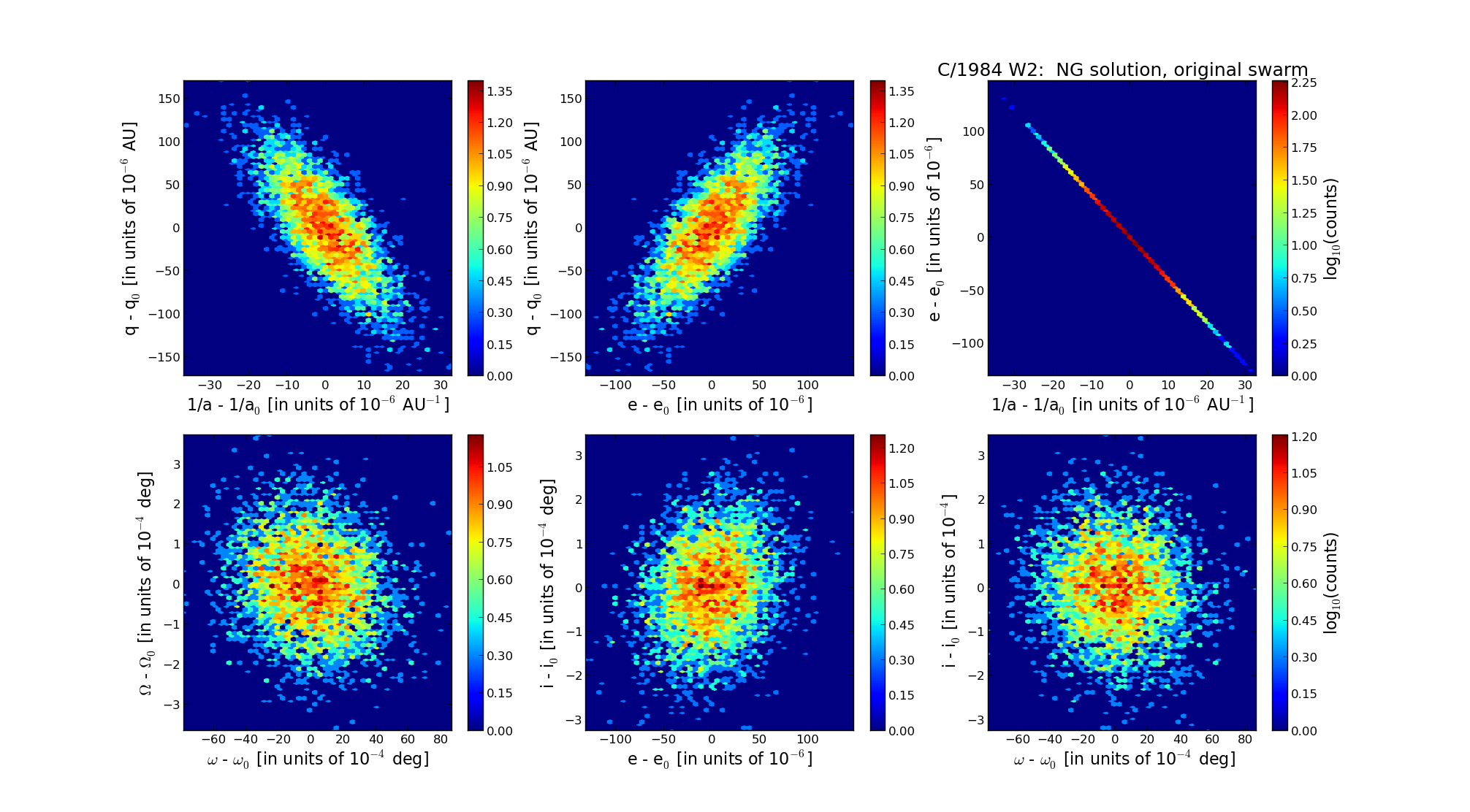| Solar System Dynamics & Planetology Group |
 |
C/1984 W2 Hartley |  |
| Solar System Dynamics & Planetology Group |
 |
C/1984 W2 Hartley |  |
| number of observations | 54 |
| number of residuals | 107 |
| data interval | 1984 Nov. 17 — 1988 May 18 |
| rms [arcsec] | 1.87 |
| orbit quality class | 1a |
| Epoch (TT) | 19850912.0 | = JD 2446320.5 |
| time of perihelion passage (TT) | 19850928.377250 | ± 0.006835 |
| perihelion distance | 4.00019640 | ± 0.00003608 |
| eccentricity | 0.99956150 | ± 0.00003854 |
| argument of perihelion [deg] | 255.267920 | ± 0.001006 |
| longitude of the ascending node [deg] | 250.208162 | ± 0.000101 |
| inclination [deg] | 89.327140 | ± 0.000096 |
| inverse semimajor axis [10-6 au-1] | 109.62 | ± 9.64 |
| Nongravitational parameters [10-8 au/day2] | A1 = 36844 ± 23157 | A2 = 0.0 (assumed) | A3 = 0.0 (assumed) |

| Epoch (TT) | 16820212 | |
| time of perihelion passage (TT) | 19850929.038315 | ± 0.014076 |
| perihelion distance | 4.00453691 | ± 0.00004945 |
| eccentricity | 0.99991890 | ± 0.00003430 |
| argument of perihelion [deg] | 255.286662 | ± 0.002360 |
| longitude of the ascending node [deg] | 250.227075 | ± 0.000102 |
| inclination [deg] | 89.263792 | ± 0.000096 |
| inverse semimajor axis [10-6 au-1] | 20.25 | ± 8.56 |
| Epoch (TT) | 22881102 | |
| time of perihelion passage (TT) | 19850930.147908 | ± 0.005057 |
| perihelion distance | 3.99720363 | ± 0.00004937 |
| eccentricity | 1.00012613 | ± 0.00003425 |
| argument of perihelion [deg] | 255.274852 | ± 0.001094 |
| longitude of the ascending node [deg] | 250.173500 | ± 0.000102 |
| inclination [deg] | 89.247736 | ± 0.000096 |
| inverse semimajor axis [10-6 au-1] | -31.55 | ± 8.57 |